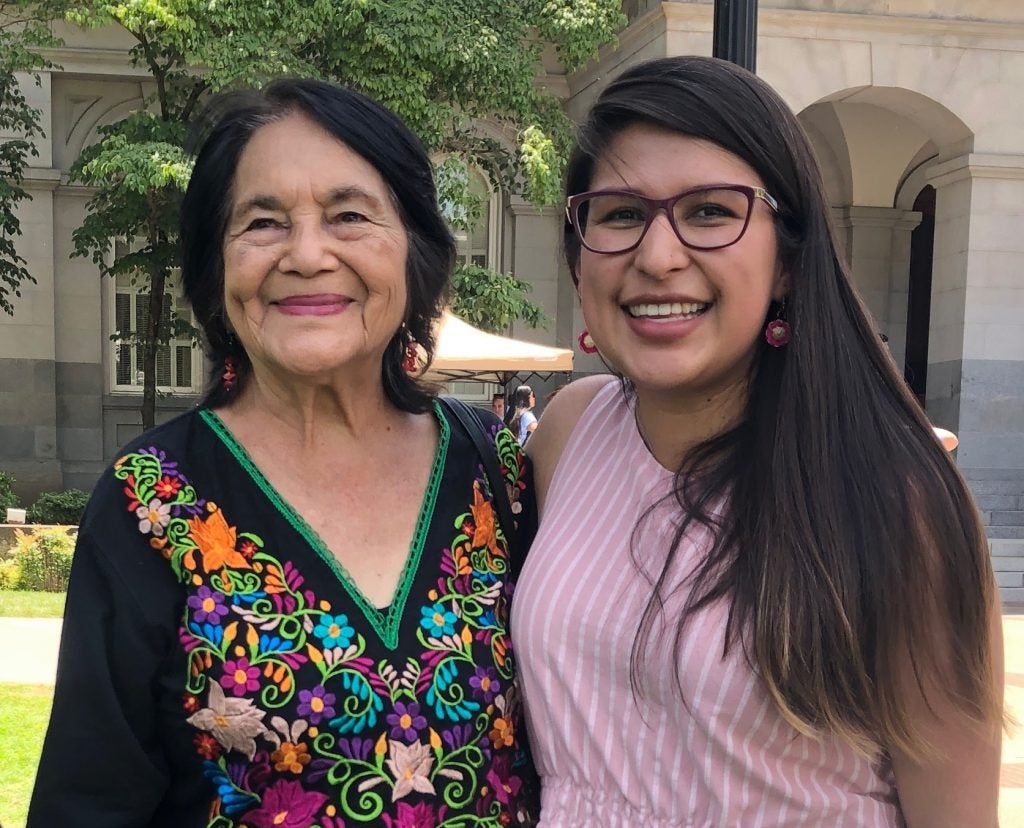This blog post was written by Adriana Fernandez, EDF’s 2019 Tom Graff Diversity Fellow.
California might have the fifth largest economy in the world, but many people in the state’s disadvantaged communities feel like they are living in a third world country because they don’t have safe, clean and affordable drinking water.
Throughout the past year as a Tom Graff Diversity Fellow at EDF, I had the privilege to gain a deeper understanding of these critical water challenges facing low-income, underrepresented communities in California and amplify the voices of community members left out of the decision-making process.
After conducting a series of interviews with community members, local nonprofit leaders, university professors and consultants, I identified three crucial challenges facing some of these communities. One water operator who I interviewed shared the story of a small water system in a rural community in the eastern part of Southern California that struggles with all three of these challenges.
1. Lack of financial, managerial and infrastructure capacity
For the last 20 years, an elderly woman has managed the water system for 30 mobile homes inside an RV park, which her father owned and she inherited. The community, built in the 1960s, had an 80,000-gallon water tank that rotted out, and the manager has been pumping water from four groundwater wells to provide water to residents.

One highlight from Adriana’s year at EDF was testifying for the first time at the California Capitol in support of a new Safe and Affordable Drinking Fund, where she met Dolores Huerta, the labor leader and civil rights activist who co-founded the United Farm Workers Association (left).
Unfortunately, the residents’ demand for water is greater than the system’s capacity, so the manager can only provide users with running water from the pipes every four days. Residents with water tanks can store enough water to meet their needs for four days, but those without tanks often run out of water before the fourth day.
The system received some money from the Drinking Water State Revolving Fund to construct a new well, but the process to apply was long, expensive and laborious. The process is even difficult for those trained to help small water systems apply for funding.
2. Degraded water quality
In addition to the challenges surrounding capacity and resources, some of the system’s pipelines have corroded and break on a monthly basis. In some cases, corrosion of the pipes contributes to copper and lead contamination of drinking water.
Breaks are also a big problem because they allow bacteria and other contaminants to get into the water, threatening the health of the families drinking water from the system. The water manager tries to fix these breaks as fast as possible under tremendous pressure, but struggles with limited funding.
3. Limited knowledge and inclusion in decision-making
This system is just one of the many low-income, underrepresented communities in California for which water comes primarily from groundwater, which also plays a vital role in the state’s economic and environmental sustainability.
Through my interviews, I realized that many of these community leaders and residents have limited knowledge about California’s groundwater management policies, in part because they are often excluded from conversations about water management.
But this knowledge is more important than ever today as local agencies implement the Sustainable Groundwater Management Act (SGMA). SGMA requires groundwater sustainability agencies (GSAs) to include all stakeholders to ensure safe and reliable access to water.
However, one study found only 37 of 243 small disadvantaged communities are participating in GSA meetings. I interviewed a staff member at an environmental justice organization who noted that GSAs frequently hold meetings at inconvenient times, such as 10 a.m.; fail to post agendas; and offer no translation services.
Solutions start with inclusion and education
These findings underscore the urgent need for more groundwater management education for rural, low-income communities. From my experience, I believe there is a larger role for state and local groundwater agencies and nonprofit environmental organizations, including EDF, to play in helping to ensure the voices of these underrepresented communities are heard as groundwater management strategies are developed. What EDF's diversity fellow learned about water challenges facing disadvantaged communities in California Share on X
The Leadership Institute, which EDF developed with Rural Community Assistance Corporation and Self Help Enterprises, is one effort working toward this goal, but it can have even greater impact by providing ongoing technical and advocacy support. In addition, the state could do more to hold local agencies accountable for ensuring broad stakeholder representation as they develop groundwater sustainability plans.
If disadvantaged communities are aware of groundwater management policies, it is largely thanks to the community engagement and advocacy of dedicated grassroots environmental justice advocates such as the Community Water Center, Association of People United for Water, Leadership Council for Justice and Accountability, and Self-Help Enterprises.
Their work is vital to the communities they serve. Although my fellowship with EDF is ending, I look forward to continuing to work on environmental justice issues and doing my part to ensure all human beings have access clean, safe and affordable drinking water.









